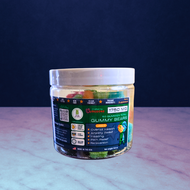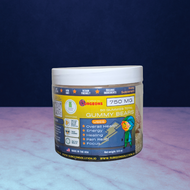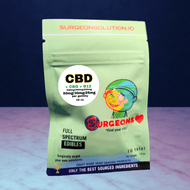Surgeons Online Cannabinoid Academy
What is CBG (cannabigerol)?
Introduction
CBG, or Cannabigerol, is a lesser-known cannabinoid that serves as the precursor to many others, including CBD and THC. Known as the “mother cannabinoid,” CBG is gaining attention for its potential therapeutic benefits, particularly in focus, inflammation reduction, and digestive health. This guide explores what makes CBG unique, how it works, and its applications in modern wellness.
What is CBG?
CBG is a minor cannabinoid found in small quantities in the cannabis plant, typically less than 1% by weight. Despite its rarity, CBG plays a vital role in the cannabis lifecycle. As the precursor to major cannabinoids like THC and CBD, CBG’s acidic form (CBGA) breaks down into these compounds as the plant matures.
CBG is non-intoxicating, meaning it doesn’t produce a “high,” making it an appealing option for those seeking therapeutic benefits without psychoactive effects.
How CBG Works in the Body
CBG interacts with the endocannabinoid system (ECS), a network of receptors that regulates key bodily functions such as mood, pain, and immune response. It binds to both CB1 receptors in the brain and CB2 receptors in the immune system, influencing processes like inflammation and stress management.
CBG also interacts with other receptors, including those involved in serotonin regulation, which may explain its potential to support mood and focus. By promoting balance, or homeostasis, CBG helps the body function optimally.
Benefits of CBG
Research into CBG’s effects is still emerging, but early studies and anecdotal evidence suggest several benefits:
- Focus and Clarity: CBG may enhance cognitive function, making it a valuable tool for mental clarity and productivity.
- Inflammation Reduction: Its anti-inflammatory properties can help alleviate discomfort from conditions like arthritis or muscle soreness.
- Digestive Support: CBG has shown promise in supporting gut health and managing symptoms of inflammatory bowel disease (IBD).
- Neuroprotection: Preliminary studies suggest CBG may protect nerve cells and support brain health.
- Antibacterial Properties: CBG has been found to combat certain bacteria, including antibiotic-resistant strains.
These benefits highlight CBG’s versatility as a cannabinoid for holistic wellness.
Popular Uses of CBG
CBG is available in a variety of products designed to suit different wellness needs:
- Oils and Tinctures: Offer quick absorption and customizable dosing for targeted benefits.
- Capsules: Provide consistent, pre-measured doses for daily use.
- Topicals: Deliver localized relief for muscle soreness and inflammation.
CBG is often combined with other cannabinoids like CBD to enhance effects through the entourage effect, where cannabinoids and terpenes work together for greater impact.
How to Choose High-Quality CBG Products
Selecting the right CBG product involves careful attention to quality and transparency. Look for:
- Third-Party Testing: Ensure the product has been tested for purity, potency, and safety.
- Clear Labeling: Check for accurate cannabinoid content and sourcing information.
- Reputable Brands: Choose companies that prioritize sustainable practices and transparency in their manufacturing processes.
By focusing on these factors, consumers can confidently explore the benefits of CBG.
Conclusion
CBG stands out as a cannabinoid with unique properties and therapeutic potential, from supporting focus and digestive health to reducing inflammation. Its role as the “mother cannabinoid” underscores its importance in the cannabis plant and its applications in modern wellness. By understanding its benefits and choosing high-quality products, individuals can harness CBG’s potential for balanced health. Explore the possibilities of CBG and discover its role in enhancing your well-being.
Introduction
- Overview of CBG (Cannabigerol) as a foundational cannabinoid.
- Importance of understanding its unique properties and potential benefits.
What is CBG?
- Explanation of CBG as the “mother cannabinoid” and its role in the cannabis plant.
- Overview of its non-intoxicating nature and rarity in cannabis strains.
How CBG Works in the Body
- Discussion of CBG’s interaction with the endocannabinoid system (ECS).
- Explanation of its effects on CB1 and CB2 receptors and its potential to support homeostasis.
Benefits of CBG
- Highlight CBG’s potential for focus, inflammation reduction, and digestive support.
- Overview of its role in neuroprotection and antibacterial properties.
Popular Uses of CBG
- Examples of CBG-infused products, such as oils, tinctures, and capsules.
- Discussion of its applications for cognitive health and wellness.
How to Choose High-Quality CBG Products
- Tips for selecting third-party-tested products with accurate labeling.
- Importance of sourcing and transparency in the cannabinoid market.
Conclusion
- Recap of CBG’s unique properties and potential health benefits.
- Encourage readers to explore CBG as part of a balanced wellness routine.







